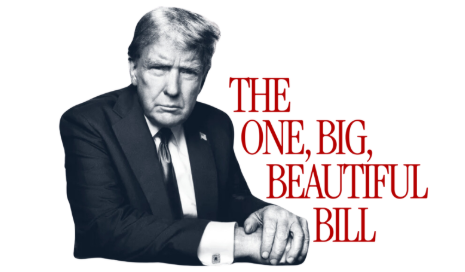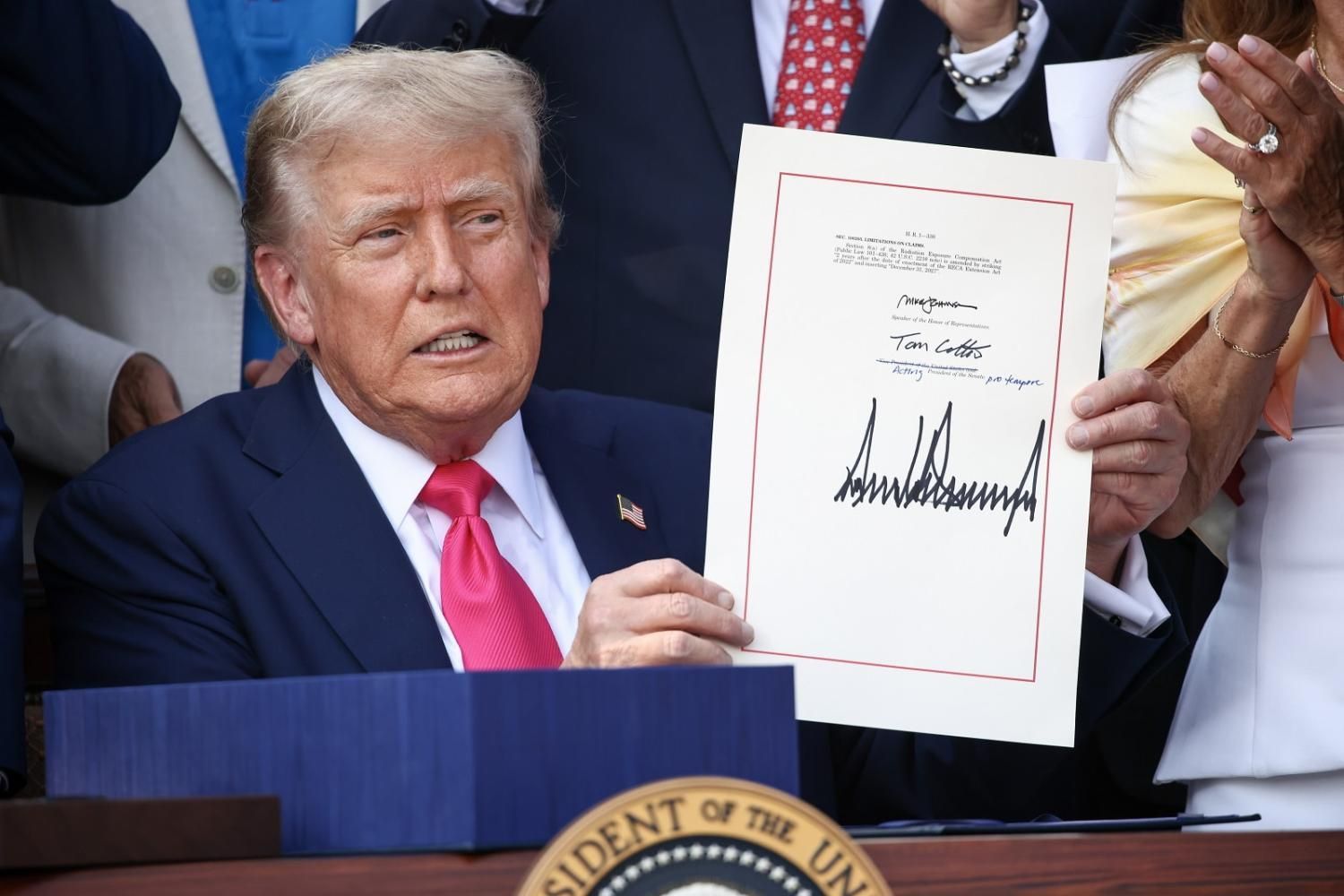
One Big Beautiful Bill Act – Tax Deductions for Working Americans and Seniors
1. “No Tax on Tips” Deduction
Allows qualified employees and self-employed individuals to deduct cash or charged tips from their taxable income.
Eligibility Criteria:
- Must work in an occupation that customarily and regularly received tips as of December 31, 2024 (IRS to publish list by October 2, 2025).
- Tips must be reported on Form W-2, Form 1099, or Form 4137.
- Applies to both itemizing and non-itemizing taxpayers.
Deduction Limits:
- $25,000 maximum per year.
- For self-employed, deduction limited to net income from the business generating the tips.
- Phase-out begins at:
- $150,000 Modified AGI (individual)
- $300,000 (joint filers)
Restrictions:
- SSTBs (Specified Service Trade or Business under section 199A) are excluded.
- Employees whose employer is an SSTB also do not qualify.
Requirements:
- Must include Social Security Number on return.
- Must file jointly if married to claim deduction.
Reporting:
- Employers/payors must furnish statements to employees and report to IRS/SSA.
- Transition relief applies for 2025.
2. “No Tax on Overtime” Deduction
Deducts the “premium pay” portion of qualified overtime wages earned under FLSA.
Eligibility Criteria:
- Applies to overtime compensation above the regular hourly rate (i.e., the "half" in "time-and-a-half").
- Must be reported on Form W-2, Form 1099, or similar.
Deduction Limits:
- $12,500 for individuals
- $25,000 for joint filers
- Phase-out at:
- $150,000 (individual)
- $300,000 (joint)
Requirements:
- Must include Social Security Number on return.
- Must file jointly if married to claim deduction.
- Applies to all taxpayers regardless of itemizing status.
Reporting:
- Employers/payors must report total qualified overtime to IRS/SSA and furnish statements to workers.
- Transition relief applies for 2025.
3. “No Tax on Car Loan Interest” Deduction
Allows taxpayers to deduct interest paid on a personal-use auto loan for newly purchased vehicles.
Eligibility Criteria:
- Vehicle must be:
- New (no used vehicles qualify).
- Personal use only (not business/commercial).
- Final assembly in the U.S.
- Have a GVWR < 14,000 lbs.
- Loan must be:
- Originated after December 31, 2024.
- Secured by a lien on the vehicle.
- Refinanced loans may qualify for deduction.
Deduction Limits:
- $10,000 per year
- Phase-out at:
- $100,000 (individual)
- $200,000 (joint filers)
Requirements:
- Must include Vehicle Identification Number (VIN) on return.
- Deduction allowed for both itemizing and non-itemizing taxpayers.
Reporting:
- Lenders/payees must report interest received to IRS and furnish statements to borrowers.
- Transition relief applies for 2025.
4. New Senior Deduction
Adds an additional $6,000 deduction for seniors aged 65 and older.
Eligibility Criteria:
- Taxpayer must be age 65 or older by December 31 of the tax year.
- Applies to each qualifying individual (i.e., $12,000 total for a senior couple).
Deduction Limits:
- No cap, but phases out at:
- $75,000 (individual)
- $150,000 (joint filers)
Requirements:
- Must include Social Security Number of qualifying individual(s).
- Must file jointly if married to claim the deduction.
Additional Notes:
- This deduction is in addition to the current senior standard deduction under existing law.
- Available for both itemizing and non-itemizing taxpayers.
Implementation and Guidance
The IRS will:
- Provide occupation and vehicle eligibility lists, and
- Issue transition relief and guidance for 2025 regarding the reporting and claiming of these new deductions.
Employers, lenders, and other reporting entities should prepare for new information return requirements.

Legislative Background
The One Big Beautiful Bill (OBBB) was passed by the Republican-led Congress in 2025 and signed into law by President Donald Trump on July 4, 2025. It was passed through budget reconciliation, which allowed it to avoid a Senate filibuster. The House passed the bill on May 22, 2025, by a narrow margin (215–214–1), and the Senate approved it on July 1, 2025, with Vice President J.D. Vance casting the tie-breaking vote. The bill is considered one of the most sweeping legislative efforts in recent U.S. history, impacting taxes, social programs, energy policy, immigration, and the national budget.
Utah Benefit Summary From Representative Burgess Owens
· The largest tax cut for middle- and working-class families in American history – A typical hardworking Utah family will keep over $10,000 more in take-home pay each year.
· No taxes on tips, overtime, or Social Security – Saving Utah servers, hotel workers, tradesmen, and retirees thousands every year.
· Made-in-America auto loan deduction – A win for Utah families and dealers who choose American-made vehicles.
· Bigger paychecks – 15% average tax cut for Americans earning $15,000–$80,000.
· Increasing the Child Tax Credit – Helping over 40 million families, including thousands here in Utah, keep more money for groceries, gas, and school supplies.
· $1,000 Trump Newborn Savings Accounts – Giving every Utah child a stronger start from day one.
· Increasing the standard deduction and doubling small business expensing – Helping Utah’s Main Street job creators invest, expand, and hire.
· Protecting two million family farms – Ending the punitive death tax so Utah’s farms can be passed down to the next generation.
· Historic investments in rural healthcare – Ensuring Utah’s rural communities have access to quality care close to home.
· Modernizing our air traffic control centers – Safer, more reliable travel for Utahns.
· Expanding Health Savings Accounts – Giving Utah families more control over their healthcare dollars.
· Unleashing American energy production – Lower prices and more jobs for Utah’s energy sector.
· Permanently securing our borders – With more resources for our ICE and CBP agents.
· Modernizing our military and supporting our men and women in uniform – Keeping America safe and strong.
Tax Provisions
The bill includes significant tax changes aimed at individuals and businesses:
- Permanently extends the 2017 individual tax cuts that were set to expire at the end of 2025.
- Temporarily increases the SALT (state and local tax) deduction cap to $40,000 for households earning less than $500,000. This provision will revert to the $10,000 cap after five years.
- Introduces temporary deductions through 2028 for:
- Tips and overtime income.
- Interest on loans for U.S.-assembled automobiles, up to $10,000 annually.
- An additional tax deduction of up to $6,000 for seniors.
- Establishes "Trump Accounts" — tax-advantaged savings accounts for children, available to be opened at birth and receive contributions until 2028.
- Raises the Child Tax Credit by $200 to a total of $2,200 and ties it to inflation moving forward.
- Implements a 1 percent remittance tax on money sent abroad.
- Increases taxes on large university endowments.
Energy and Climate Policy
The bill rolls back many clean energy initiatives introduced under the Biden administration. Specific provisions include:
- Phasing out tax credits for renewable energy projects.
- Eliminating electric vehicle purchase subsidies.
- Repealing the methane emissions fee on energy producers.
- Offering new subsidies for domestic oil and gas development.
- Expanding tax credits for U.S.-based semiconductor manufacturing.
- Repealing federal taxes on firearm silencers.
Budgetary Impact and Spending
The bill raises the U.S. debt ceiling by $5 trillion. According to projections by the Congressional Budget Office (CBO), it will add approximately $2.8 trillion to the national deficit over the next decade. Other independent estimates place the deficit increase closer to $3 to $4 trillion.
To offset some of the tax cuts and spending, the bill includes significant reductions in social spending:
- A 12 percent cut to Medicaid.
- Tighter work requirements for SNAP (food assistance) and other welfare programs.
- These changes could result in millions of Americans losing access to health insurance or other benefits.
Defense and Border Security
A major feature of the OBBB is its focus on national security:
- Allocates $150 billion in new defense spending, with a focus on shipbuilding, drone warfare, missile systems, and Indo-Pacific military operations.
- Adds $150 billion for immigration enforcement, dramatically expanding the budget for Immigration and Customs Enforcement (ICE). ICE is projected to become the most heavily funded federal law enforcement agency by 2029.
Public Response and Criticism
The bill has been met with strong opposition from Democrats, social justice organizations, environmental groups, and many economists. Key criticisms include:
- The bill disproportionately benefits wealthier Americans while cutting essential support for low-income households.
- Medicaid cuts could result in 10 to 11 million people losing healthcare coverage.
- Clean energy rollbacks are expected to cause up to 830,000 job losses and increase average household energy costs by as much as $640 per year by 2035.
- Critics argue the bill represents a regressive shift in federal priorities, prioritizing tax breaks and military expansion over social welfare and environmental protection.
Support and Endorsements
Supporters of the bill, primarily conservative lawmakers, business groups, and pro-defense advocates, argue that the OBBB will:
- Boost job creation by reducing taxes on labor (tips and overtime).
- Strengthen national security and border enforcement.
- Encourage savings through Trump Accounts and higher child tax credits.
- Promote energy independence by prioritizing domestic fossil fuel production.
Summary
The One Big Beautiful Bill represents a comprehensive reshaping of American fiscal policy. It solidifies Trump-era tax cuts, overhauls welfare programs, repeals key climate initiatives, and increases spending on defense and immigration enforcement. While hailed by conservatives as a major pro-growth achievement, the bill has also sparked intense national debate over its long-term economic, environmental, and social consequences.

